List of unsuccessful major party candidates for President of the United States
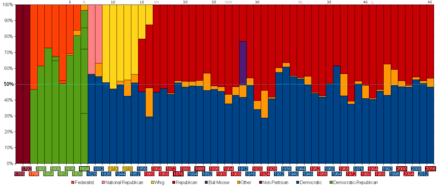
The United States has had a two-party system for much of its history, and the two major parties have nominated presidential candidates in most presidential elections.[1] Since the ratification of the United States Constitution in 1788, there have been 51 unsuccessful major party candidates for President of the United States.[lower-alpha 1] Numerous third party nominees and independents have run for president, but the vast majority of presidential election winners have been nominated by one of the major parties. Of the unsuccessful third party and independent candidates who have sought election to the presidency, only eight individuals have accrued ten percent of either the electoral vote or the popular vote.
Since the ratification of the Twelfth Amendment in 1804, the winner of any given presidential election is the candidate that receives the majority of the electoral vote. If no individual wins a majority of the electoral vote, then the United States House of Representatives holds a contingent election to determine the election winner. Since 1824, the national popular vote has also been recorded.[2] The national popular vote has no direct effect on the winner of the presidential election, and there have been five presidential elections in which the winner did not win a majority or a plurality of the popular vote.
The two current major parties are the Democratic Party and the Republican Party. At various points prior to the American Civil War, the Federalist Party, the Democratic-Republican Party, the National Republican Party, and the Whig Party were major parties.[1] One unsuccessful major party candidate, DeWitt Clinton, served as the de facto Federalist nominee in the 1812 presidential election even though he was a member of the Democratic-Republican Party. Clinton lost the 1812 election to incumbent Democratic-Republican President James Madison.[3] In the 1872 presidential election, the Liberal Republican Party put forward an unsuccessful major party nominee, Horace Greeley. Greeley, who was also nominated by the Democratic Party, was defeated by incumbent Republican President Ulysses S. Grant.[4] Aside from the Liberal Republican Party, seven different third parties have put forward candidates who won at least ten percent of the electoral vote or at least ten percent of the popular vote.[lower-alpha 2] Since 1796, just one independent candidate, Ross Perot, has accrued more than ten percent of the popular vote.[6]
Five presidential elections, all of which occurred before the American Civil War, deviate from the normal pattern of two major party candidates. There were no major party candidates for president in the presidential election of 1789 and the presidential election of 1792,[lower-alpha 3] both of which were won by George Washington.[8] In the presidential election of 1820, incumbent President James Monroe of the Democratic-Republican Party effectively ran unopposed.[lower-alpha 4] In the presidential election of 1824, four Democratic-Republicans competed for the presidency in the general election as the party was unable to agree on a single nominee.[10] Similarly, in the presidential election of 1836, four different Whig candidates received electoral votes; the main Whig candidate in the North and the main Whig candidate in the South are listed in the table below.[11]
List of unsuccessful major party candidates
- * indicates that the candidate served as the President of the United States at some point in their career
- † indicates that the candidate won a majority or plurality of the popular vote
- ‡ indicates that the candidate won a plurality of the electoral vote
List of unsuccessful major third party and independent candidates
These third party and independent candidates won at least ten percent of the electoral vote[6] or at least ten percent of the popular vote.[94]
- * indicates that the candidate served as the President of the United States at some point in their career
- † indicates that the candidate finished with the second highest share of the popular vote
- ‡ indicates that the candidate finished with the second highest share of the electoral vote
See also
- List of Presidents of the United States
- List of United States presidential candidates
- List of unsuccessful major party candidates for Vice President of the United States
- List of people who received an electoral vote in the United States Electoral College
- List of United States Electoral College results
Notes
- ↑ There have been 58 unsuccessful major party candidacies by 51 individuals in 55 of the 58 presidential elections. This does not include major party candidates who only competed in a small fraction of the states that participated in the election.
- 1 2 3 Though the Progressive Party of 1912 and the Progressive Party of 1924 shared names and an affiliation with the progressive movement, they were two distinct political parties.[5]
- ↑ In the 1792 election, the emerging Democratic-Republican Party attempted to defeat Vice President John Adams's bid for re-election. The Democratic-Republican candidate, George Clinton, finished with 50 electoral votes, but Adams won re-election with 77 electoral votes.[7]
- ↑ The Federalist Party did not nominate a presidential candidate and essentially conceded the 1820 presidential election before it was held. Monroe did not face any opposition in the election, although one presidential elector, William Plumer, cast his vote for John Quincy Adams.[9]
- 1 2 The most recent elective office, or senior appointive position, held by the candidate when the presidential election was held.
- 1 2 State of primary residence.
- ↑ This column reflects the share of the total presidential electoral vote won by the losing candidate. Prior to the passage of the Twelfth Amendment in 1804, each member of the Electoral College cast two votes, with no distinction made between electoral votes for president and electoral votes for vice president.[12] For the elections of 1796 and 1800, the number in this column reflects the share of presidential electors who cast one of their two votes for Jefferson (in 1796) or Adams (in 1800).
- 1 2 Prior to the ratification of the Twelfth Amendment in 1804, each member of the Electoral College cast two votes, with no distinction made between votes for president and votes for vice president.[6] The Democratic-Republicans may or may not have officially nominated Jefferson for president through a congressional nominating caucus, but Jefferson was widely regarded as the party's main presidential candidate in the 1796 election. The Democratic-Republicans did not select an official vice presidential candidate. Aaron Burr finished with the second-most electoral votes among individuals affiliated with the party.[13] Because Jefferson won more electoral votes than the second Federalist candidate, Thomas Pinckney, he was elected as vice president.[6]
- ↑ Prior to the ratification of the Twelfth Amendment in 1804, each member of the Electoral College cast two votes, with no distinction made between votes for president and votes for vice president.[6] Thomas Jefferson and the other main Democratic-Republican candidate, Aaron Burr, each won the votes of 73 presidential electors, more than either of the Federalist candidates. Because Jefferson and Burr tied in the electoral vote, the election was decided by a contingent election held in the House of Representatives; Jefferson was elected president and Burr became vice president.[6]
- ↑ Prior to the ratification of the Twelfth Amendment in 1804, each member of the Electoral College cast two votes, with no distinction made between votes for president and votes for vice president.[6] The Federalist congressional nominating caucus nominated a ticket of Adams and Charles C. Pinckney. Though the party did not officially nominate either candidate for president or vice president, most Federalists favored Adams for president and Pinckney for vice president.[16] Adams won 65 electoral votes and Pinckney won 64 electoral votes.[6]
- ↑ Clinton was a Northern Democratic-Republican who challenged the incumbent Democratic-Republican president, James Madison, in the general election.[3] Clinton was nominated for president by a legislative caucus of New York Democratic-Republicans, and much of his support came from Democratic-Republicans dissatisfied with Madison's leadership in the War of 1812. The Federalist Party did not officially nominate Clinton, but most Federalist leaders tacitly supported Clinton's candidacy in hopes of defeating Madison.[19]
- ↑ In 1812, Clinton simultaneously held the positions of Mayor of New York City and Lieutenant Governor of New York. He had also previously served in the United States Senate.
- ↑ The Federalists did not nominate a ticket in 1816, though some Federalists were elected to serve as presidential electors. A majority of the Federalist electors cast their presidential vote for King and their vice presidential vote for Howard.[20]
- ↑ The Democratic-Republican Party was unable to unite behind a single candidate in 1824.[10] Four Democratic-Republicans received electoral votes in the general election, and, as no candidate won a majority of the electoral vote, the election was decided in a contingent election held in the House of Representatives. John Quincy Adams won that contingent election.[6]
- 1 2 3 In the election 1824, no presidential candidate won a majority of the electoral vote for president, but John C. Calhoun won a majority of the electoral vote for vice president. Most presidential electors who voted for either Adams or Jackson for president voted for Calhoun for vice president. Similarly, most electors who cast their presidential vote for Clay cast their vice presidential vote for Nathaniel Macon, and most electors who cast their presidential vote for Crawford cast their vice presidential vote for Sanford.[6]
- ↑ The Whigs did not unite around a single candidate in 1836, but the party ran only one presidential candidate per state.[11] 25 states held a popular vote in the 1836 election; Harrison was the Whig candidate in fifteen states, most of which were in the North, White was the Whig candidate in nine states, all of which were in the South, and Daniel Webster was the Whig candidate in Massachusetts. Harrison and White each received electoral votes from multiple states, while Webster and Willie Person Mangum each received electoral votes from a single state (Massachusetts and South Carolina, respectively). In total, the Whigs won 49.1 percent of the popular vote and 41.8 percent of the electoral vote.[6]
- 1 2 The Whigs did not select an official vice presidential nominee, and, as in the presidential race, two vice presidential contenders emerged. In most Northern states, the Whigs fielded a ticket of Harrison and Granger, and in most Southern states, the Whigs fielded a ticket of White and Tyler.[27] Granger, Tyler, and two Democrats, Richard Mentor Johnson and William Smith, each won a share of the electoral vote.[6] Because no one candidate won a majority of the electoral vote for vice president, the Senate held a contingent election to select the vice president. In the only contingent election that the Senate has ever held, Johnson defeated Granger.[28]
- ↑ The 1840 Democratic National Convention denied renomination to Vice President Richard Mentor Johnson, and the Democrats failed to officially nominate a vice presidential candidate in 1840.[31] Nonetheless, 48 of the 60 presidential electors who cast their presidential vote for Van Buren cast their vice presidential vote for Johnson. Most of the remaining Van Buren electors cast their vice presidential vote for Littleton Waller Tazewell.[32]
- 1 2 After the collapse of the Whig Party in the mid-1850s, the Republican Party and the American Party (the political organization of the Know Nothing movement) emerged as the major challengers to the Democratic Party. By 1856, neither the Republican nor the American Party had truly supplanted the Whig Party as the second major political party in the United States.[36] Nonetheless, the American Party is frequently described as a third party.[37][38][39] In 1856, the American Party, along with a rump convention of Whigs, nominated a presidential ticket led by former President Millard Fillmore.[40] After the 1856 election, the Republican Party firmly established itself as one of the two major parties alongside the Democratic Party, while the American Party collapsed.[41]
- 1 2 The Democratic Party fractured along sectional lines in 1860 and held multiple national conventions. The Northern Democrats nominated Douglas and the Southern Democrats nominated Vice President John C. Breckinridge.[44][45] Many sources include Breckinridge as a third party candidate,[46][6][47] but other sources do not.[48][2]
- ↑ Greeley and Benjamin Gratz Brown were nominated by the Liberal Republican Party, a splinter group of Republicans. The ticket of Greeley and Brown was later nominated by the 1872 Democratic National Convention, as the Democrats hoped to defeat President Ulysses S. Grant's re-election bid by uniting with the Liberal Republicans.[4][52]
- ↑ Greeley had served in the House of Representatives from December 1848 to March 1849. He was primarily known for his role as editor of the New-York Tribune.[53]
- ↑ Greeley died after election day but before the Electoral College cast its votes, and thus did not receive any electoral votes.[2] Greeley would have won 66 electoral votes (18.8% of the 352 electoral votes available) had he been alive when the Electoral College cast its votes.[54]
- 1 2 In 1896, after Bryan won the Democratic presidential nomination, he was also nominated by the Populist Party, a major third party. The Populist vice presidential nominee was Thomas E. Watson.[61] Bryan's running mate on the Democratic ticket, Arthur Sewall, won 149 electoral votes for vice president, while Watson won 27 electoral votes for vice president.[6]
- ↑ Parker was the Chief Judge of the New York Court of Appeals, the highest court in New York.
- 1 2 After Taft defeated Theodore Roosevelt for the presidential nomination at the 1912 Republican National Convention, supporters of Roosevelt established the Progressive Party, a third party dedicated to progressive ideals.[63][64][65] In the 1912 election, Democratic nominee Woodrow Wilson won a plurality of the popular vote and a majority of the electoral vote. Roosevelt won the second highest share of electoral votes and popular votes, while Taft finished in third place in both categories.[6] Roosevelt is the only third-party candidate ever to win the second-most popular votes in a presidential election.[66]
- ↑ Sherman died on October 30, 1912, and Taft did not name another running mate before the 1912 election was held. After the election, the Republican National Committee designated Nicholas Murray Butler as Taft's running mate for the purposes of the electoral vote, and Butler received eight electoral votes.[68]
- ↑ Willkie was an attorney who had served as the president of the Commonwealth & Southern Corporation in the 1930s.
- ↑ The 1972 Democratic National Convention selected Thomas Eagleton as the party's vice presidential nominee, but Eagleton dropped out of the race after it was publicly disclosed that he had undergone electroconvulsive therapy in order to treat depression. Shriver replaced Eagleton on the Democratic ticket.[82]
- ↑ Perot was a businessman who was primarily known as the founder of Electronic Data Systems.[102]
References
- 1 2 Blake, Aaron (April 27, 2016). "Why are there only two parties in American politics?". Washington Post. Retrieved 18 September 2018.
- 1 2 3 4 5 6 7 "Electoral College Box Scores 1789-1996". National Archives and Records Administration. Retrieved 16 September 2018.
- 1 2 Morgan (1969), pp. 191–193
- 1 2 Hale (1950), p. 338
- ↑ Rosenstone et al. (2018), p. 93
- 1 2 3 4 5 6 7 8 9 10 11 12 13 14 15 16 17 18 19 "United States Presidential Election Results". Dave Leip's Atlas of U.S. Presidential Elections. Retrieved 16 September 2018.
- ↑ Thompson (1980), pp. 174–175
- ↑ Knott, Stephen. "George Washington: Campaigns and Elections". Miller Center. University of Virginia. Retrieved 16 September 2018.
- ↑ Preston, Daniel. "James Monroe: Campaigns and Elections". Miller Center. University of Virginia. Retrieved 16 September 2018.
- 1 2 Morgan (1969), p. 195
- 1 2 Deskins et al. (2010), pp. 106–107
- ↑ Neale, Thomas H. (3 November 2016), Contingent Election of the President and Vice President by Congress: Perspectives and Contemporary Analysis (PDF), Congressional Research Service
- ↑ Morgan (1969), pp. 185–186
- ↑ "JEFFERSON, Thomas, (1743 - 1826)". Biographical Directory of the United States Congress. United States Congress. Retrieved September 21, 2018.
- ↑ "ADAMS, John, (1735 - 1826)". Biographical Directory of the United States Congress. Retrieved 21 September 2018.
- ↑ Morgan (1969), p. 186
- ↑ "Charles Cotesworth Pinckney". Biography.com. A&E Television Networks, LLC. Retrieved September 21, 2018.
- ↑ "CLINTON, De Witt, (1769 - 1828)". Biographical Directory of the United States Congress. United States Congress. Retrieved September 21, 2018.
- ↑ Siry (1985), pp. 457–460
- ↑ Deskins et al. (2010), pp. 65
- ↑ "KING, Rufus, (1755 - 1827)". Biographical Directory of the United States Congress. United States Congress. Retrieved September 21, 2018.
- ↑ "JACKSON, Andrew, (1767 - 1845)". Biographical Directory of the United States Congress. United States Congress. Retrieved September 21, 2018.
- ↑ "CRAWFORD, William Harris, (1772 - 1834)". Biographical Directory of the United States Congress. United States Congress. Retrieved September 21, 2018.
- 1 2 3 "CLAY, Henry, (1777 - 1852)". Biographical Directory of the United States Congress. United States Congress. Retrieved September 21, 2018.
- ↑ "ADAMS, John Quincy, (1767 - 1848)". Biographical Directory of the United States Congress. United States Congress. Retrieved September 21, 2018.
- ↑ "HARRISON, William Henry, (1773 - 1841)". Biographical Directory of the United States Congress. United States Congress. Retrieved September 21, 2018.
- ↑ Peterson (1989), pp. 19–20
- ↑ Deskins et al. (2010), pp. 108–109
- ↑ "WHITE, Hugh Lawson, (1773 - 1840)". Biographical Directory of the United States Congress. United States Congress. Retrieved September 21, 2018.
- 1 2 "VAN BUREN, Martin, (1782 - 1862)". Biographical Directory of the United States Congress. United States Congress. Retrieved September 21, 2018.
- ↑ Sirgiovanni (1994), pp. 767–768
- ↑ "Richard Mentor Johnson, 9th Vice President (1837-1841)". United States Senate. Retrieved September 22, 2018.
- ↑ "CASS, Lewis, (1782 - 1866)". Biographical Directory of the United States Congress. United States Congress. Retrieved September 21, 2018.
- ↑ "Winfield Scott". History.com. A&E Television Networks, LLC. Retrieved September 21, 2018.
- ↑ "FRÉMONT, John Charles, (1813 - 1890)". Biographical Directory of the United States Congress. United States Congress. Retrieved September 21, 2018.
- ↑ McPherson (1988), pp. 140–144, 153–154
- ↑ Cooper, William. "James Buchanan: Campaigns and Elections". Miller Center. University of Virginia. Retrieved September 19, 2018.
- ↑ Boissoneault, Lorraine (January 26, 2017). "How the 19th-Century Know Nothing Party Reshaped American Politics". Smithsonian. Retrieved September 19, 2018.
- ↑ Hicks (1933), p. 10
- ↑ Holt (2010), pp. 91–94
- ↑ Gienapp (1985), p. 547
- ↑ Gienapp (1987), p. 323
- ↑ "DOUGLAS, Stephen Arnold, (1813 - 1861)". Biographical Directory of the United States Congress. United States Congress. Retrieved September 21, 2018.
- ↑ Smith (1975), pp. 106–113
- ↑ VandeCreek, Drew E. "Campaign of 1860". Northern Illinois University Libraries. Retrieved September 19, 2018.
- ↑ Patch, B. W. (1936). "Third Party Movements in American Politics". CQPress. Retrieved 19 September 2018.
- ↑ Rosenstone et al. (2018), pp. 59–63
- ↑ Hicks (1933), pp. 3–28
- ↑ "George McClellan". History.com. A&E Television Networks. Retrieved September 21, 2018.
- ↑ "Horatio Seymour". Encyclopaedia Britannica. Retrieved September 21, 2018.
- ↑ "GREELEY, Horace, (1811 - 1872)". Biographical Directory of the United States Congress. United States Congress. Retrieved September 21, 2018.
- ↑ Frail, T. A. (July 26, 2018). "The Only Time a Major Party Embraced a Third-Party Candidate for President". Smithsonian. Retrieved September 19, 2018.
- ↑ "1872: Grant v. Greeley". HarpWeek, LLC. Retrieved September 20, 2018.
- ↑ Seitz (1926), p. 391
- ↑ "Samuel Tilden Biography". National Park Service. Retrieved September 21, 2018.
- ↑ "Winfield Scott Hancock". History.com. A&E Television Networks, LLC. Retrieved September 21, 2018.
- ↑ "BLAINE, James Gillespie, (1830 - 1893)". Biographical Directory of the United States Congress. United States Congress. Retrieved September 21, 2018.
- ↑ "Grover Cleveland". WhiteHouse.gov. Retrieved 21 September 2018.
- ↑ "HARRISON, Benjamin, (1833 - 1901)". Biographical Directory of the United States Congress. United States Congress. Retrieved September 21, 2018.
- 1 2 "BRYAN, William Jennings, (1860 - 1925)". Biographical Directory of the United States Congress. United States Congress. Retrieved September 21, 2018.
- ↑ Kazin (2006), pp. 63–65
- ↑ Mandelbaum, Robert M. "Alton Brooks Parker". NYCourts.gov. Historical Society of the New York Courts. Retrieved September 21, 2018.
- ↑ Jacobson, Aileen (October 5, 2012). "A Landmark Race With the Bull Moose". New York Times. Retrieved September 19, 2018.
- ↑ Milkis, Sidney. "Theodore Roosevelt: Campaigns and Elections". Miller Center. University of Virginia. Retrieved September 19, 2018.
- ↑ Glass, Andrew (August 6, 2017). "Bull Moose convention nominates Theodore Roosevelt, Aug. 7, 1912". Politico. Retrieved September 19, 2018.
- ↑ Demaria, Ed (October 13, 2016). "Third Party Candidates Poised for Marginal Success for First Time in Years". NBC News. Retrieved September 18, 2018.
- ↑ "William Howard Taft". WhiteHouse.gov. Retrieved September 21, 2018.
- ↑ "James S. Sherman, 27th Vice President (1909-1912)". United States Senate. Retrieved September 26, 2018.
- ↑ "Biographies of the Secretaries of State: Charles Evans Hughes (1862–1948)". Office of the Historian. United States State Department. Retrieved 21 September 2018.
- ↑ "COX, James Middleton, (1870 - 1957)". Biographical Directory of the United States Congress. United States Congress. Retrieved September 21, 2018.
- ↑ "DAVIS, John William, (1873 - 1955)". Biographical Directory of the United States Congress. United States Congress. Retrieved September 21, 2018.
- ↑ "Al Smith". Biography.com. A&E Television Networks. Retrieved 21 September 2018.
- ↑ "Herbert Hoover". WhiteHouse.gov. Retrieved 21 September 2018.
- ↑ "Alf Landon, G.O.P. Stand-Bearer, Dies at 100". October 13, 1987. Retrieved September 21, 2018.
- ↑ "Wendell Willkie". Encyclopaedia Britannica. Retrieved September 21, 2018.
- ↑ "Thomas E. Dewey Is Dead at 68". New York Times. March 17, 1971. Retrieved 21 September 2018.
- ↑ "Adlai E. Stevenson". Encyclopaedia Britannica. Retrieved September 21, 2018.
- ↑ "NIXON, Richard Milhous, (1913 - 1994)". Biographical Directory of the United States Congress. United States Congress. Retrieved September 21, 2018.
- ↑ "GOLDWATER, Barry Morris, (1909 - 1998)". Biographical Directory of the United States Congress. United States Congress. Retrieved September 21, 2018.
- ↑ "HUMPHREY, Hubert Horatio, Jr., (1911 - 1978)". Biographical Directory of the United States Congress. United States Congress. Retrieved September 21, 2018.
- ↑ "McGOVERN, George Stanley, (1922 - 2012)". Biographical Directory of the United States Congress. United States Congress. Retrieved September 21, 2018.
- ↑ Clymer, Adam (March 5, 2007). "Thomas F. Eagleton, 77, a Running Mate for 18 Days, Dies". New York Times. Retrieved September 22, 2018.
- ↑ "FORD, Gerald Rudolph, Jr., (1913 - 2006)". Biographical Directory of the United States Congress. United States Congress. Retrieved September 21, 2018.
- ↑ "James Carter". WhiteHouse.gov. Retrieved September 21, 2018.
- ↑ "MONDALE, Walter Frederick, (1928 - )". Biographical Directory of the United States Congress. United States Congress. Retrieved September 21, 2018.
- ↑ "Michael Dukakis Fast Facts". CNN. October 21, 2017. Retrieved September 21, 2018.
- ↑ "BUSH, George Herbert Walker, (1924 - )". Biographical Directory of the United States Congress. United States Congress. Retrieved September 21, 2018.
- ↑ "DOLE, Robert Joseph, (1923 - )". Biographical Directory of the United States Congress. United States Congress. Retrieved September 21, 2018.
- ↑ "GORE, Albert Arnold, Jr., (1948 - )". Biographical Directory of the United States Congress. United States Congress. Retrieved September 21, 2018.
- ↑ "KERRY, John Forbes, (1943 - )". Biographical Directory of the United States Congress. United States Congress. Retrieved September 21, 2018.
- ↑ "McCAIN, John Sidney, III, (1936 - 2018)". Biographical Directory of the United States Congress. United States Congress. Retrieved September 21, 2018.
- ↑ "Mitt Romney". Biography.com. A&E Television Networks. Retrieved 21 September 2018.
- ↑ "CLINTON, Hillary Rodham, (1947 - )". Biographical Directory of the United States Congress. United States Congress. Retrieved September 21, 2018.
- ↑ Rosenstone et al. (2018), Appendix A
- ↑ "FILLMORE, Millard, (1800 - 1874)". Biographical Directory of the United States Congress. United States Congress. Retrieved September 21, 2018.
- ↑ "BRECKINRIDGE, John Cabell, (1821 - 1875)". Biographical Directory of the United States Congress. United States Congress. Retrieved September 21, 2018.
- ↑ "BELL, John, (1796 - 1869)". Biographical Directory of the United States Congress. United States Congress. Retrieved September 21, 2018.
- ↑ "Theodore Roosevelt". WhiteHouse.gov. Retrieved September 21, 2018.
- ↑ "LA FOLLETTE, Robert Marion, (1855 - 1925)". Biographical Directory of the United States Congress. United States Congress. Retrieved September 21, 2018.
- ↑ "George C. Wallace". Biography.com. A&E Television Networks, LLC. Retrieved September 21, 2018.
- ↑ "Ross Perot". Biography.com. Biography.com. Retrieved September 21, 2018.
- ↑ Bernstein, David S. (March 29, 2016). "Why Hillary Clinton Should Be Worried About Ross Perot". Politico. Retrieved September 21, 2018.
Works cited
- Deskins, Donald Richard; Walton, Hanes; Puckett, Sherman (2010). Presidential Elections, 1789-2008: County, State, and National Mapping of Election Data. University of Michigan Press. ISBN 978-0472116973.
- Gienapp, William E. (1985). "Nativism and the Creation of a Republican Majority in the North before the Civil War". The Journal of American History. 72 (3): 529–555. JSTOR 1904303.
- Gienapp, William E. (1987). The Origins of the Republican Party, 1852-1856. Oxford University Press. ISBN 9780198021148.
- Hale, William Harlan (1950). Horace Greeley: Voice of the People. Harper & Brothers. OCLC 336934.
- Hicks, John D. (1933). "The Third Party Tradition in American Politics". The Mississippi Valley Historical Review. 20 (1): 3–28. JSTOR 1902325.
- Holt, Michael F. (2010). Franklin Pierce. Times Books. ISBN 978-0-8050-8719-2.
- Kazin, Michael (2006). A Godly Hero: The Life of William Jennings Bryan. Knopf. ISBN 978-0375411359.
- McPherson, James M. (1988). Battle Cry of Freedom: The Civil War Era. Oxford University Press. ISBN 9780199743902.
- Morgan, William G. (1969). "The Origin and Development of the Congressional Nominating Caucus". Proceedings of the American Philosophical Society. 113 (2): 184–196. JSTOR 985965.
- Peterson, Norma Lois (1989). The Presidencies of William Henry Harrison and John Tyler. University Press of Kansas. ISBN 978-0-7006-0400-5.
- Rosenstone, Steven J.; Behr, Roy L.; Lazarus, Edward H. (2018). Third Parties in America: Citizen Response to Major Party Failure (2nd ed.). Princeton University Press. ISBN 9780691190525.
- Seitz, Don Carlos (1926). Horace Greeley: Founder of The New York Tribune. Bobbs-Merrill.
- Sirgiovanni, George S. (1994). "Dumping the Vice President: An Historical Overview and Analysis". Presidential Studies Quarterly. 24 (4): 765–782. JSTOR 27551324.
- Siry, Steven Edwin (1985). "The Sectional Politics of "Practical Republicanism": De Witt Clinton's Presidential Bid, 1810-1812". Journal of the Early Republic. 5 (4): 441–462. JSTOR 3123061.
- Smith, Elbert B. (1975). The Presidency of James Buchanan. University Press of Kansas. ISBN 978-0-7006-0132-5.
- Thompson, Harry C. (1980). "The Second Place in Rome: John Adams as Vice President". Presidential Studies Quarterly. 10 (2): 171–178. JSTOR 27547562.
Further reading
- Farris, Scott (2011). Almost President: The Men Who Lost The Race But Changed The Nation. Lyons Press. ISBN 978-0762763788.
- Morris, Seymour (2017). Fit for the Presidency?: Winners, Losers, What-ifs, and Also-rans. University of Nebraska Press. ISBN 9781612348872.
- Southwick, Leslie H. (2008). Presidential Also-Rans and Running Mates, 1788 Through 1996 (2nd ed.). McFarland. ISBN 978-0786438914.
- Stone, Irving (1966) [1943]. They Also Ran (Revised ed.). Doubleday. ISBN 978-0385074094.
External links
- "Presidential Elections Data". The American Presidency Project. University of California, Santa Barbara. Retrieved 18 September 2018.
- "Presidential Elections, 1789 to 1920: Resource Guides". Library of Congress. Retrieved 18 September 2018.
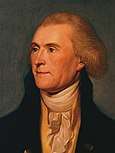
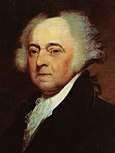
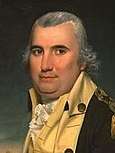
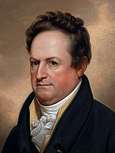
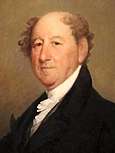
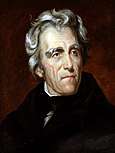
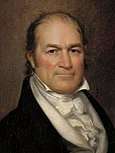
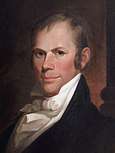
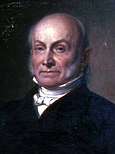
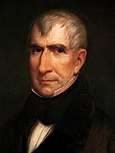
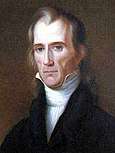
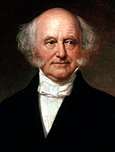
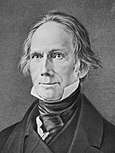
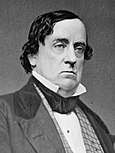
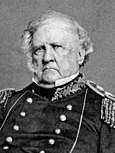
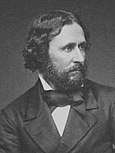
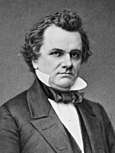
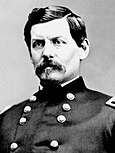
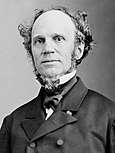
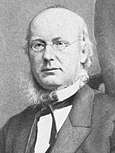
.jpg)
.jpg)
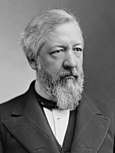
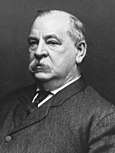
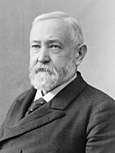
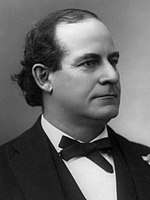
.jpg)
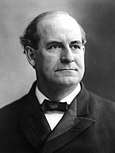
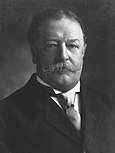
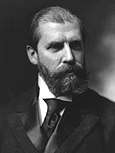
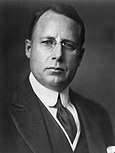
.jpg)
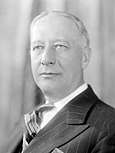
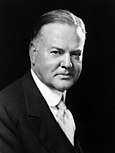
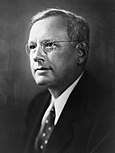
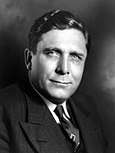
.jpg)
.jpg)
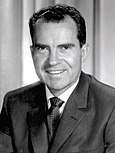
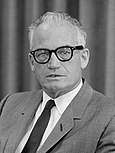
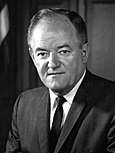
.jpg)
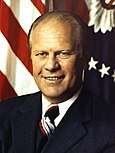
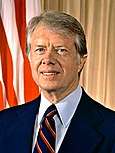
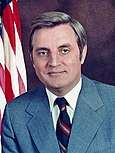
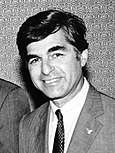
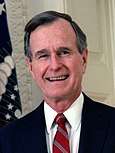
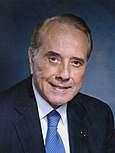
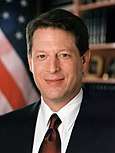
.jpg)
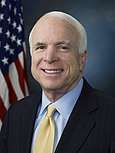
.jpg)
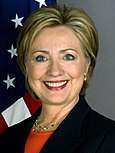
.jpg)
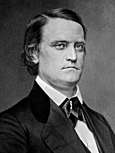
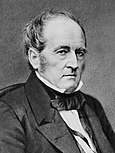
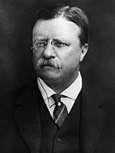
.jpg)
.jpg)
.jpg)